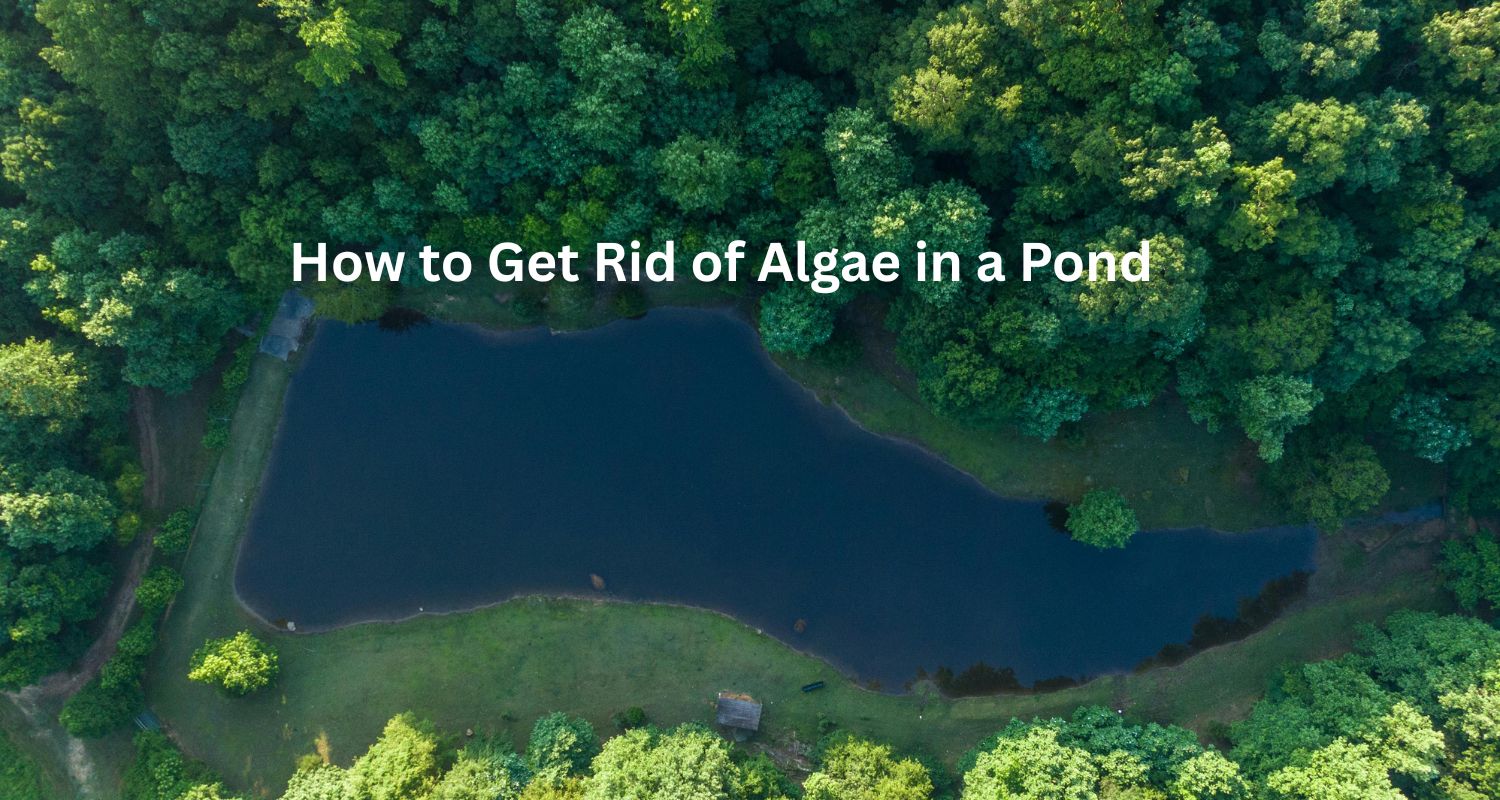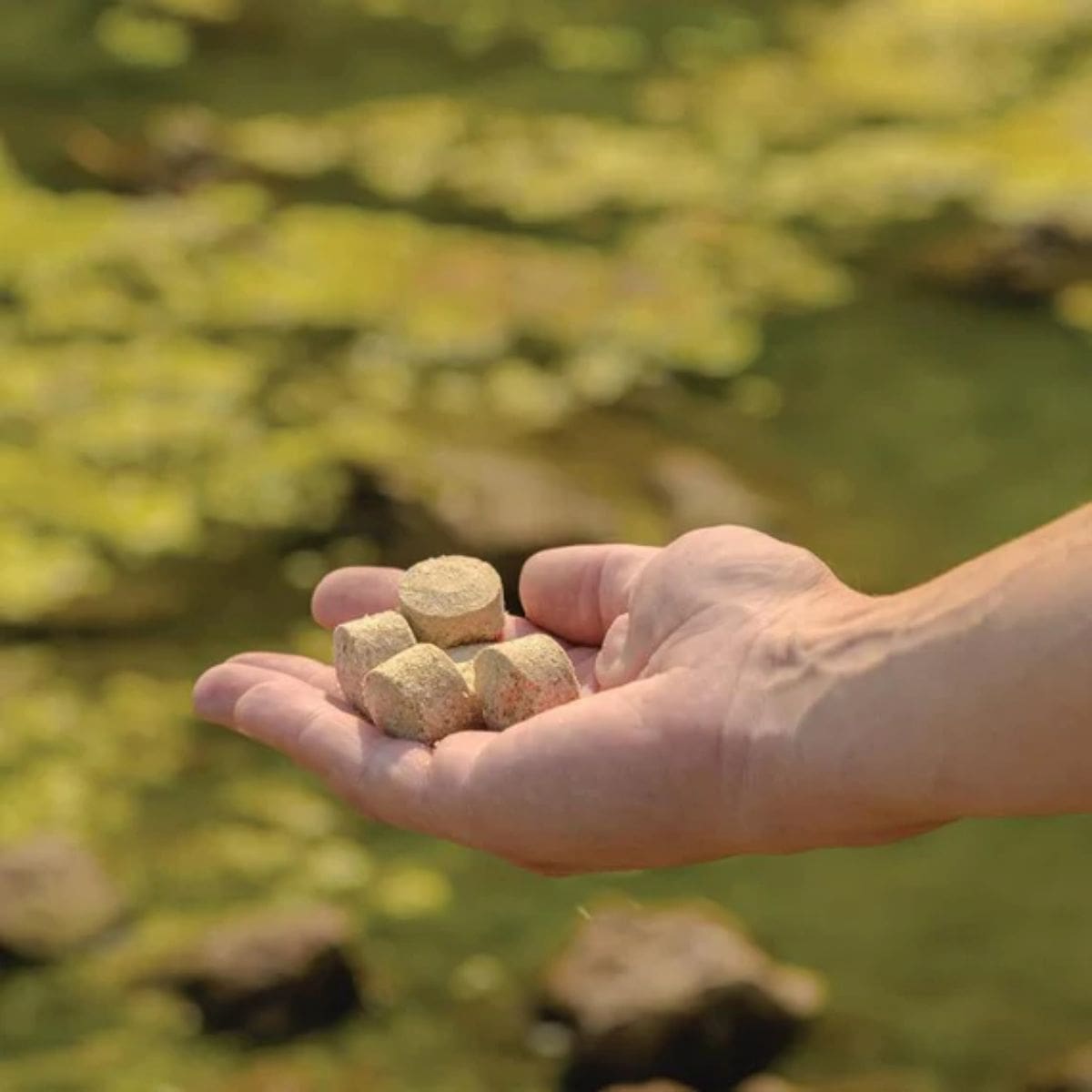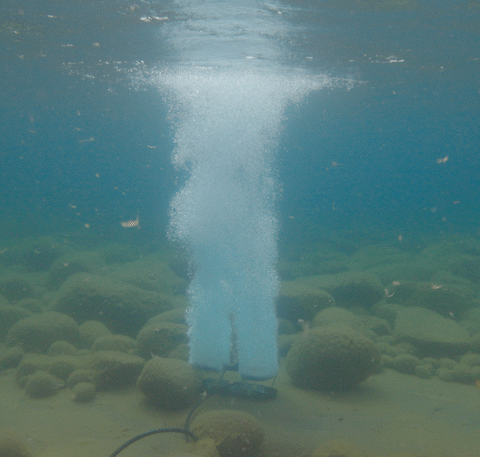
How to Get Rid of Algae in a Pond
Algae in your pond might start as a light green tint or a few wispy strands. But it can quickly turn into a full-blown bloom that chokes out fish, clogs pumps, and ruins the look (and smell) of your water.
The good news? Getting rid of algae in a pond isn’t about dumping in chemicals. It’s about understanding what type of algae you’re dealing with and using the right tools to treat and prevent it long‑term.

🦠 What Causes Excessive Algae in Ponds?
- Sunlight and shallow water: Most pond algae thrive in warm, sunny conditions—especially in shallow areas.
- Nutrient overload: Fertilizer runoff, uneaten fish food, and decaying organic matter feed green algae in ponds.
- Poor circulation: Without water movement, oxygen levels drop, creating perfect conditions for algae to take over.
- Muck and sludge: Debris at the pond bottom acts like compost, releasing nutrients that fuel blooms.
💬 Holly's Input: People forget that what’s happening around the pond matters just as much. Fertilizer runoff, grass clippings, even pet waste nearby. It all of it becomes food for algae.
🔍 Identify the Algae Before You Treat
| Types of Pond Algae | Looks Like | Best Treatment |
|---|---|---|
| Filamentous | Floating mats (pond scum) | Raking, targeted algaecide, aeration |
| Planktonic | Murky green/brown water (pea soup) | Bacteria, dye, circulation |
| Blue‑Green (Cyanobacteria) | Paint‑like mats, musty smell | Copper treatments, nutrient binders, aeration |
| Chara | Crunchy muskweed (skunkweed) | Spot treatment, raking |
| Spirogyra | Thin, floating mats (string algae) | Manual removal, bacteria, aeration |
Removing Algae From a Pond
- Manual removal: Skim or rake out algae mats before they decay.
- Aeration: Boost oxygen with a pond aerator to stop algae-friendly conditions.
- Beneficial bacteria: These pond muck removers help break down excess nutrients naturally.
- Targeted treatments: Use pond algae remover only for the type of algae you’ve identified.

💬 Holly wants you to remember: People think one treatment fixes it forever, but algae always comes back if you don’t fix the root problem. Killing it is just step one.
🚫 What to Avoid When Fixing Your Algae Problem
- Treating the entire pond at once: Doing this can crash oxygen levels and harm fish
- Using pond dye as a cure: It prevents light but doesn’t remove algae
- Skipping aeration: Dead algae will still decompose and fuel future blooms
- Misidentifying algae and water weeds: Wrong treatment = wasted effort
💬 Holly informs us: The biggest mistake? People grab a one‑size‑fits‑all chemical thinking it'll work. If you're dealing with rooted weeds, it won’t and may make things worse.
🌱 Natural Pond Algae Control Solutions
What is Holly's go‑to plan for pond algae solutions? Aeration, bacteria, and dye.
This trio doesn’t just treat surface symptoms. It transforms the pond’s environment so algae struggles to grow in the first place. With better oxygen, balanced nutrients, and less sunlight penetration, you’re creating a space where algae can’t easily thrive.
- Install a bottom-diffused aerator
- Add beneficial bacteria regularly
- Use pond dye early as a preventive
Want to know the benefits of pond aeration? Read more how aerating your pond is huge for long-term success.

Real-World Fix: From Swamp to Showpiece
Before: One customer had thick green water, clogged pump, and foul odor.
After: We installed a bottom-diffused system and started bacteria treatments. Within four weeks their pond was clear, odor‑free, and algae‑controlled.
If your pond smells bad while dealing with algae issues, you may also want to check out our blog, How to Get Rid of Pond Smell, for great insight on how to help get rid of the odor.
🧹 What To Do After Treating
- Remove dead algae so it doesn’t fuel new blooms
- Run aeration continuously
- Use bacteria doses regularly
- Plant a buffer to block nutrient runoff
- Apply dye in early spring
💬 Holly Says: If you’ve got fish, you're adding nutrients daily. Without bacteria or aeration, those nutrients fuel algae fast.

📢 Final Word: Clear Ponds Take Work But Worth It
Getting rid of algae in a pond isn’t about throwing more products at the surface. It’s about fixing the environment that lets it grow in the first place.
Whether you're dealing with string algae, pond scum, or green water, consistent aeration, bacteria, and nutrient control are what keep it from coming back.
If you're tired of treating the same algae again and again, let us help you break the cycle.
Not sure which setup is right? Contact Us and we'll help you find the best solution.